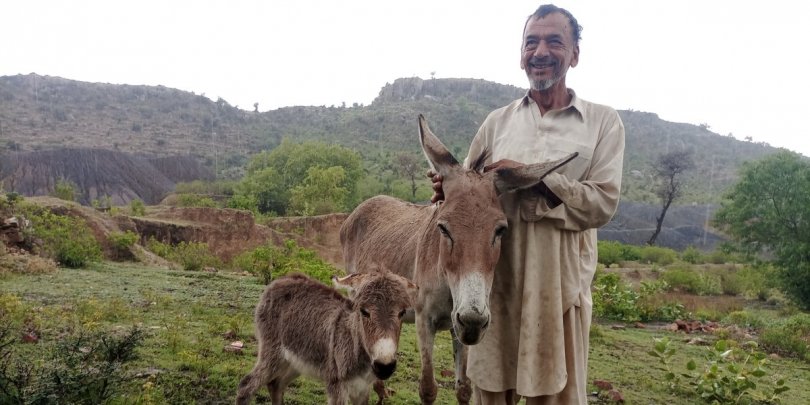
ACKNOWLEDGEMENT IS NOT ENOUGH. WE MUST RESPECT THE CONNECTION BETWEEN HUMANS, ANIMALS AND THE ENVIRONMENT
Anna Marry and Chiara Soletti of Brooke's External Affairs team discuss the Nexus Resolution that was adopted by the UN earlier this year.
It is almost trite to say that we live in an interconnected world. The word ‘nexus’ is often used to describe a link or a connection. Some links are obvious and widely agreed upon, while some are hotly contested, and some are rather hidden.
Earlier this year, the Animal Welfare – Environment – Sustainable Development Nexus resolution was adopted at the United Nations Environment Assembly (UNEA). The first-ever resolution to be tabled and approved with explicit reference to animal welfare, the resolution called on countries to protect animals in their efforts to pursue sustainable development.
The well-being of human communities relies on balancing the climate and environmental conditions they live in. A balanced climate makes ecosystems healthy, allowing them to thrive and create the conditions to produce nutritious food and resources to support every aspect of human and animal life. This interdependence is also acknowledged in the Sustainable Development Agenda 2030; but despite this recognition, the ecological and carbon footprint of human communities has led to rising levels of greenhouse emissions and pollution, destruction of ecosystems, as well as endangering animal life. Illegal animal trading has also led to biodiversity loss at an alarming rate, and to an increased spread of dangerous zoonotic diseases.
New models of development are needed, making the work around the Agenda 2030 a key factor in recreating a balance between human life and the planet. Still, when discussing new approaches to sustainable development, animal welfare is rarely, if ever, mentioned, and the contribution of wildlife to the health of ecosystems, and farming animals to sustainable livelihoods, rarely emerge. Working animals in particular provide a range of benefits to sustainable ways of living in rural communities, contributing to livelihoods (SDG1), food production and security (SDG2), better human health (SDG3), communities’ climate resilience (SDG13) and even protecting ecosystems supporting sustainable farming against industrial farming practices that can lead to desertification (SDG15).
If this sounds complex, it is because it IS complex, hence why the Resolution calls for a comprehensive, evidence-based report to be produced that will unpack these multi-sectoral, multi-directional interactions.
Regardless of what the report findings are, one thing is clear from the start - animals in good welfare tend to be healthier and as such they benefit people while reducing the burden on planetary resources.
While having the Nexus Resolution adopted is a huge success in itself, there is still a long and bumpy road from adoption to implementation. We; government representatives, scientists, civil society, and citizens must all stand behind the Resolution to make sure we not only say that the world is interconnected, but also fully embrace what this means for our health, the quality of the air we breathe, the food we eat and the animals we interact with. And once we realise that, we must hold our elected representatives to account to ensure that policies and practices respect the connection between people, animals and the planet.
by Anna Marry and Chiara Soletti, Global External Affairs Team
Published online for The Brooke on the website of the organisation.
